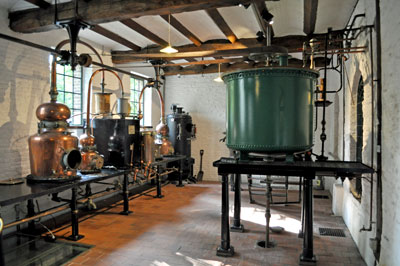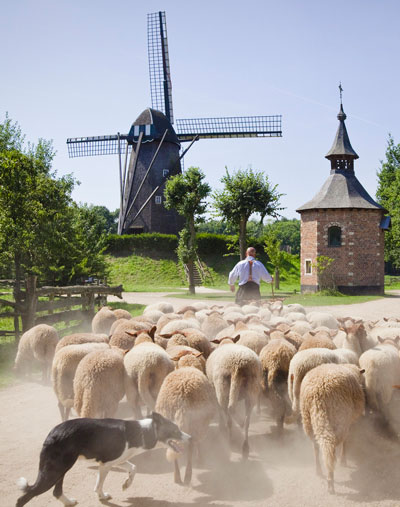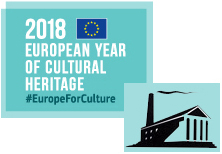Tourism and hotels
where to stay and what to visit in Limburg
The province of Limburg is known as a province of ‘slow tourism’ and a ‘cycling paradise’, offering in a mainly flat landscape nature and heritage
These aspects do reflect on the type of accomodation, with many smaller hotels and bed-and-breakfast accomodation out of the city centres.
Larger hotels can be found in the towns of Genk and Hasselt.
 |
Hasselt is known for its museums and galleries. It once was the capital of 'jenever' distilling - the strong spirit of the Low Countries. This history is presented in the National Museum of Distilling, housed in an authentic old distillery which in 1975 became the first industrial building in Belgium to be protected by law as a historic monument. The city also has its city museum, a fashion museum, a literary museum, fine arts galleries,... |
 |
Halfway between Hasselt and Genk the Bokrijk Open Air museum is situated. It is one of the largest of its kind in Europe, with 148 authentic buildings that form the heart of the heritage collection, presenting the rural life and the living of artisans and crafts people inn Flanders. The open air museum is offering a lot of living history. It has two working windmills and two water mills. The visitor can see the brewing in an old brewhouse, distilling 'jenever' in a pot stills, and a large number of craftsmen at their work: a potter, a blacksmith, a tanner, a carpenter,… |
While a decade ago the mining region had little appeal to tourists, its mining heritage is now fastly developing as a major tourist asset - with guided walks on the tip heaps and their unique flora and fauna, the multicultural mining villages (with many good 'foreign' restaurants), and of course the impressive buildings of the mines and the pit head gears.
|
Genk is a town that, from between the two World Wars started booming because of the coal mines - especially the mines of Winterslag and Waterschei. |
Just conclude: one can spend many interesting days and visit splendid museums and heritage sites in the area. So don't hesitate to come early or to stay for a couple of other days after the conference.
Looking for a hotel ?
We do not book hotel accomodation for the participants - leaving them their choice for price, quality and location of the hotels they prefer.
But we do advise participants to find a hotel in Genk centre - by preference on walking distance from the railway station. One can also book a hotel and take the train between Hasselt and Genk, to join the bus from the latter railway station - bringing the participants to Beringen on Saturday, and leaving from here for the bus tour on Sunday.
The provincial tourism department has a list of hotels and B&Bs on its website and can provide you with a lot of information, guidebooks and even apps to plan your visit and your stay in the province.
One can also contact the tourist information offices
See also the list of other information centres
Alternatively, find hotels and cheap internet-bookings through
We do advise to compare the prices, as when building this webpage we remarked important differences between the above mentioned websites. Be carefull, some booking sites only give the price per day, other for the whole period you want to stay
Youth Hostels
There is a new Youth Hostel in Hasselt, next to the railway station, Hostel H
and an other one behind the Bokrijk Open Air Museum, called De Roerdomp
